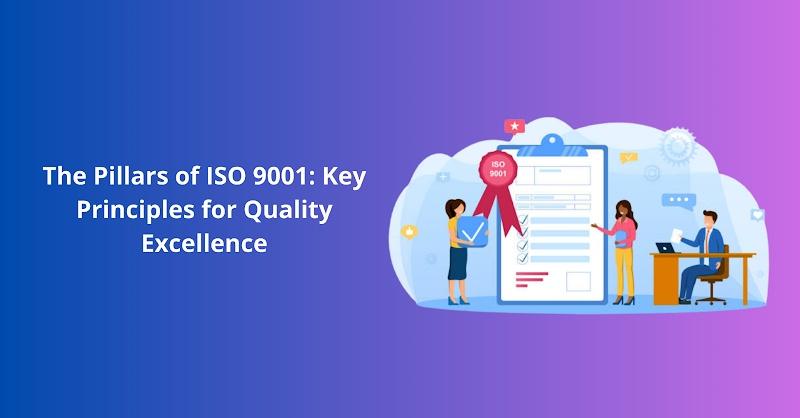Delivering consistently high-quality goods and services has become a top priority for businesses. Many companies seek ISO 9001 Certification, a widely accepted standard that establishes the structure for a reliable Quality Management System (QMS), to accomplish this goal. But What is ISO 9001? exactly, and how does it support achieving superior quality? This blog explores the fundamental ideas behind ISO 9001, illuminating how important it is for improving the calibre of goods and services.
What is ISO 9001?
The ISO 9001 standard was developed by the International Organisation for Standardisation (ISO), and it outlines the requirements for developing and maintaining a successful quality management system. This standard applies to organisations of all sizes and operating in a variety of industries, such as manufacturing, healthcare, services, and technology. An organization’s dedication to exceeding customer expectations and continually improving its operations, which results in higher product quality and more customer satisfaction, is demonstrated by ISO 9001 accreditation.
The Pillars of ISO 9001 Key Principles
Below are the Key Principles of ISO 9001:
Customer Focus
The core of ISO 9001 places a heavy emphasis on the needs of the client. Delivering goods and services that meet customer wants and expectations requires a deep understanding of their needs, expectations, and preferences. To promote ongoing improvement and customer satisfaction, ISO 9001 encourages businesses to collect consumer feedback, analyse it, and apply it to their operations.
Leadership
The culture of quality within an organisation is greatly influenced by leadership. The standard places a lot of emphasis on how crucial strong leadership commitment is to the QMS. Establishing quality standards, goals, and a defined course for the organization’s quality journey is the responsibility of leaders. Their participation and commitment help to create a culture where excellence comes first.
Engagement of People
The employees of a company are its most precious asset. All staff should participate in the quality management process according to ISO 9001. Employees become stakeholders in the organization’s quality goals when they are enabled, encouraged, and engaged to share their ideas. Better communication, creativity, and problem-solving outcomes from this engagement eventually result in higher-quality goods and services.
Process Approach
ISO 9001 promotes a quality management strategy that is process-oriented. This entails being aware of how various organisational activities are interrelated and how they support the overall quality goals. Organisations may simplify operations and reduce inefficiencies, leading to more consistent and higher quality outputs, by discovering, analysing, and optimising these processes.
Continuous Improvement
The foundation of the ISO 9001 standard is continuous improvement. Companies are urged to continuously evaluate their procedures, goods, and services to find room for improvement. The PDCA (Plan-Do-Check-Act) cycle, which organisations use to plan for improvements, implement changes, monitor outcomes, and take corrective measures, captures this notion. This iterative procedure offers a flexible approach to quality control.
Evidence-Based Decision Making
Making wise selections is essential for efficient quality control. Organisations are encouraged by ISO 9001 to make decisions based on facts and evidence rather than gut feeling. This entails gathering and analysing pertinent data, which offers insights into the efficiency of quality efforts and the performance of processes. Decisions made with data produce more precise improvements and superior results.
Relationship Management
Collaboration extends beyond the organization’s borders. ISO 9001 emphasizes building and maintaining strong relationships with suppliers, partners, and other stakeholders. By understanding their needs and expectations, organizations can ensure the seamless flow of quality across the supply chain, resulting in higher overall quality and customer satisfaction.
Conclusion
Organisations aiming to attain quality excellence might use ISO 9001 certification as a foundation for their efforts. By following to its core values of customer focus, leadership, involvement of people, process approach, continuous improvement, and relationship management, businesses may create a robust Quality Management System that enhances their products, services, and client happiness. ISO 9001 continues to provide a solid basis for quality-driven organisations seeking to lead in their respective industries even as the business landscape changes.
